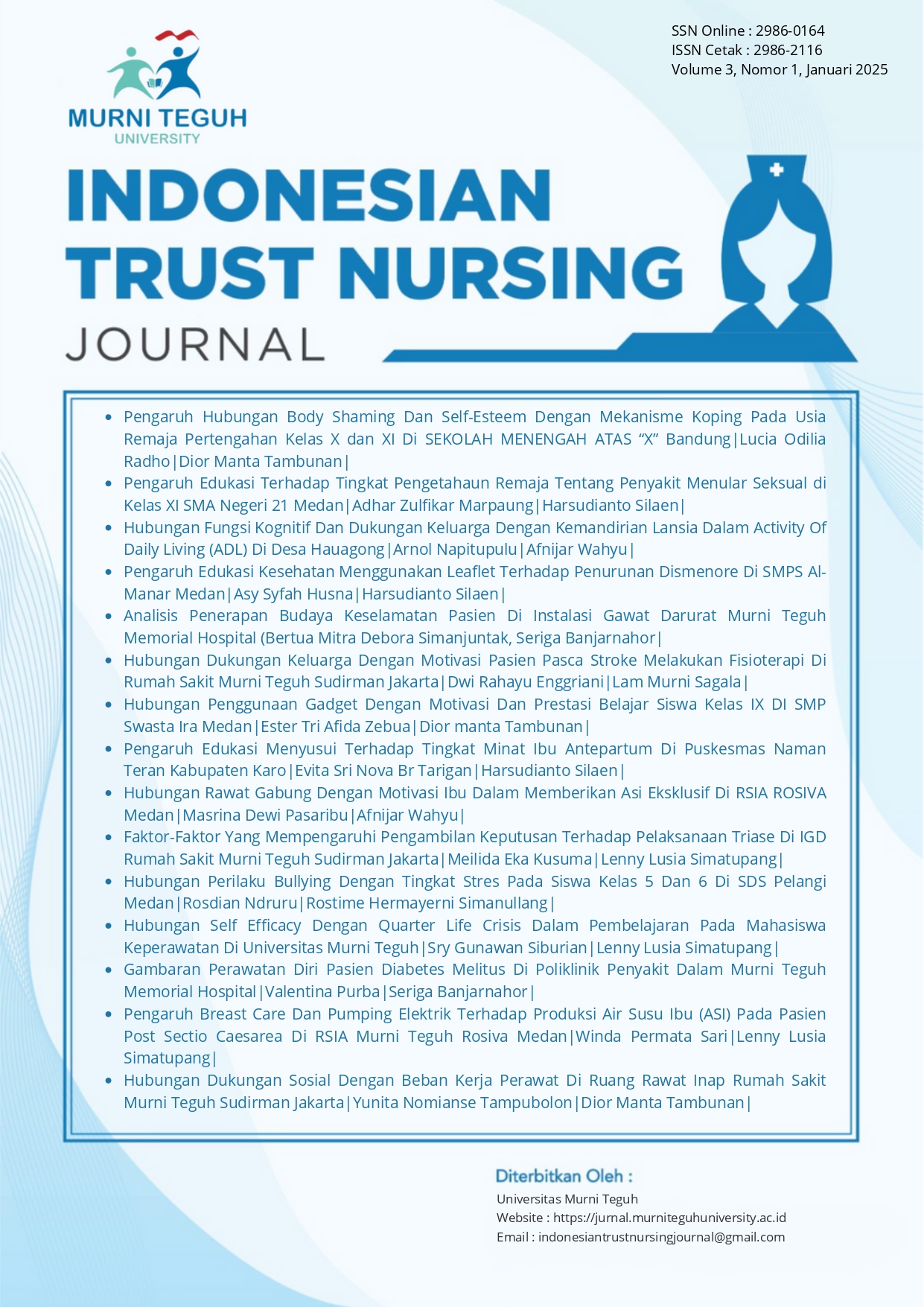Hubungan Penggunaan Gadget Dengan Motivasi Dan Prestasi Belajar Siswa Kelas IX DI SMP Swasta Ira Medan
Abstract
The use of Gadgets around the world continues to increase from year to year. But in reality,
very few teenagers or junior high school students use Gadgets properly. They tend to use these
Gadgets for things they don't need at their age. Excessive use of Gadgets can result in
decreased learning motivation, impaired concentration, and laziness in learning. As a result,
students are always obsessed with using Gadgets and forget their learning commitments which
have an impact on their achievements. The purpose of this study was to determine the
Relationship between Gadget Use and Motivation and Learning Achievement of Grade IX
Students at IRA Medan Private Junior High School. The research method used a quantitative
research type with an analytical survey method with a research design in the form of Descriptive
Correlation with a Cross-Sectional approach. The number of samples in this study was 53
students. The sampling technique in this study was Total sampling. The bivariate test used to
analyze the data in this study was the Spearman non-parametric test because the data was
not normally distributed according to the results of the Kolmogorov Smirnov test. The results of
the study showed that there was a relationship between the use of gadgets and motivation with
a p-value = 0.004 (α <0.05) and there was no relationship between the use of gadgets and
learning achievement with a p-value = 0.491 (α > 0.05). It can be concluded that there is a
relationship between the use of gadgets and the motivation of grade IX students at IRA Medan
Private Junior High School and there is no relationship between the use of gadgets and the
learning achievement of grade IX students at IRA Medan Private Junior High School. It is
recommended to conduct further research with more samples and add the variables Stress,
Mental Health, Eye Health, and Early Adolescents as respondents.
Copyright (c) 2025 Indonesian Trust Nursing Journal

This work is licensed under a Creative Commons Attribution-ShareAlike 4.0 International License.







